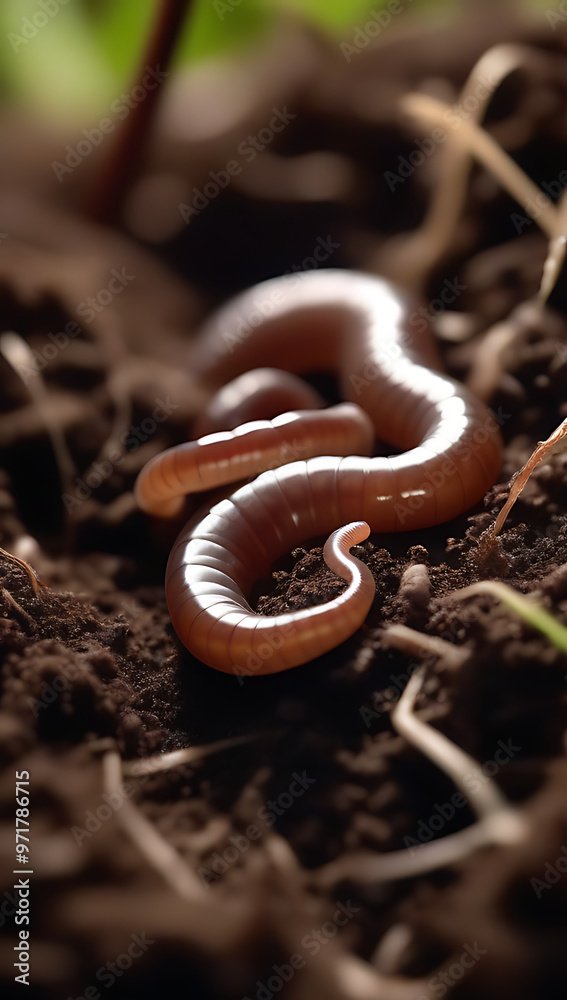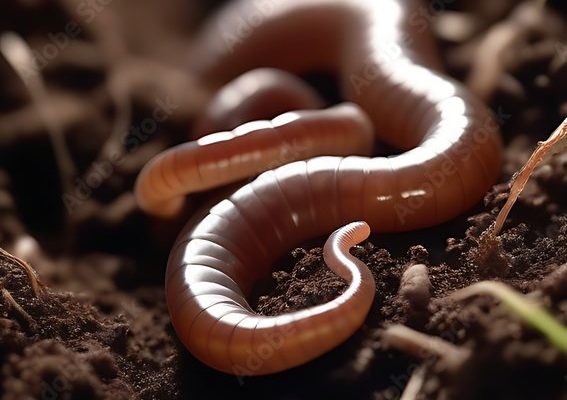
So, how can you tell if your garden or local ecosystem is thriving with earthworms? There are a few key signs to look out for. It’s important to understand these indicators so you can nurture your soil better. After all, healthy soil means healthy plants, and who doesn’t want a flourishing garden? Let’s explore the signs of a healthy earthworm population, so you can keep your soil in tip-top shape.
1. Abundant Soil Structure
One of the first things to notice in soil rich with earthworms is its structure. A healthy earthworm population enhances soil aeration and drainage. When you dig your hands into the dirt, it should feel crumbly and loose, almost like chocolate cake! This is thanks to earthworms creating tunnels as they move through the earth.
These tunnels not only allow air to circulate but also help water penetrate deeper into the ground. If your soil is compacted and hard, it might be a sign that earthworm populations are dwindling. You can check the soil structure by grabbing a handful. If it falls apart easily with a bit of shake, you’ve got a good sign of earthworm activity.
2. Dark, Rich Soil Color
The color of your soil can reveal a lot about its health. Healthy earthworm populations contribute to a rich, dark hue. Why? Well, as earthworms consume organic matter like leaves and grass, they break it down into nutrient-rich castings, also known as worm poop. Yummy, right?
Earthworm castings are packed with nutrients like nitrogen, phosphorus, and potassium, essential for plant growth. If your soil is a vibrant dark brown or black, it’s often a sign that you have a healthy earthworm community at work. Light or pale soil, on the other hand, might suggest that these critters are missing from the ecosystem.
3. Presence of Organic Matter
Another telling sign of a healthy earthworm population is the amount of organic matter in your soil. Earthworms help decompose organic materials, such as leaves, grass clippings, and kitchen scraps. When you spot a good amount of this organic matter, it indicates that earthworms are likely involved in breaking it down for better nutrients.
Take a look around—do you see rich layers of decaying leaves or compost? That’s a great sign! If the organic matter in your soil is minimal, it might be time to start introducing more plant materials to attract and feed earthworms. Remember, they thrive on organic compounds, so the more you have, the happier those little guys will be!
4. Earthworm Castings on the Surface
Have you ever noticed small, dark pellets on the soil surface? Those are likely earthworm castings! These castings are a telltale sign that you have an active earthworm population. They look like tiny balls and provide a wealth of nutrients for plants. When earthworms come to the surface to feed, they leave behind this treasure as they burrow back down.
If you see a good amount of these pellets scattered around your garden or yard, it means that earthworms are not only present but thriving! This is great news for your plants, as those castings can help improve soil fertility and structure.
5. Active Soil Life
Healthy earthworm populations often coincide with other signs of soil life. If you dig into your garden and find various critters like microorganisms, insects, or even other worms, you’re looking at a lively ecosystem. You might think of soil as a bustling city, where earthworms are the construction workers, helping build and maintain the infrastructure.
Healthy soil teems with life, and the presence of diverse organisms usually indicates that earthworms are there too. If things seem a bit too quiet below the surface, you might want to consider ways to boost your soil health.
6. Reduced Soil Erosion
Healthy earthworm populations can help mitigate soil erosion. They create channels that allow water to seep in, which can reduce surface runoff during heavy rains. When water is absorbed more effectively, it lowers the risk of erosion. You might notice that areas with lots of earthworms have fewer bare patches and stronger plant roots, which adds further stability.
If you’ve got a garden or landscape that suffers from erosion, you may want to explore ways to encourage earthworm populations. Planting cover crops or adding organic matter can attract these helpful creatures and make your soil more resilient over time.
7. Earthworm Diversity
Lastly, the type and diversity of earthworms in your soil can provide valuable insights. Different species contribute uniquely to soil health. For instance, some types of earthworms thrive on leaf litter, while others prefer deeper soil layers. If you’re seeing various kinds in your garden, this is a strong indicator of a healthy ecosystem.
Diversity is key in nature. A mix of species means your soil is likely well-rounded and balanced, supporting a range of crops and plants. By encouraging a variety of earthworms, you’re setting up a system that can adapt to different challenges and thrive.
In conclusion, the signs of healthy earthworm populations in soil are like breadcrumbs leading you to a flourishing garden. From a rich, dark soil color and abundant organic matter to the presence of diverse soil life, each sign paints a picture of a thriving below-ground community. Remember, these little creatures are integral to maintaining soil health, so keep an eye out for these indicators. With a little effort, you can nurture your soil to create an ecosystem that promotes growth, resilience, and beauty in your garden. Happy gardening!

